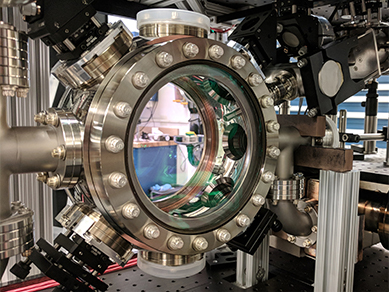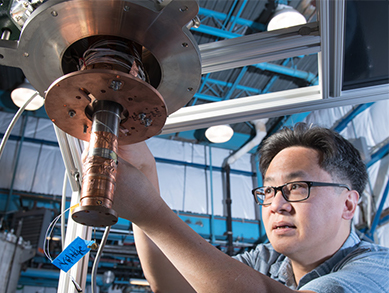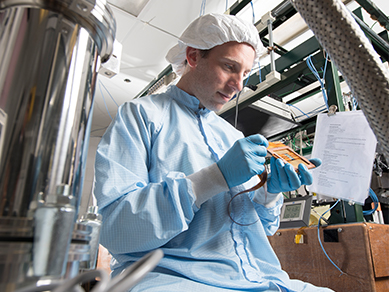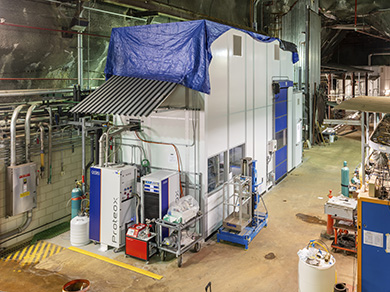
MAGIS-100 and dark matter
Scientists at the Fermilab-hosted 100-meter Matter-wave Atomic Gradiometer Interferometric Sensor are hunting for dark matter — the elusive stuff that makes up 85% of the matter of the universe. MAGIS-100 combines the unique physical features of the Fermilab site with the laboratory expertise in vacuum and magnetics fields. Employing quantum sensors and the world’s longest baseline atom interferometer — an instrument that measures differences in atomic wavelengths — researchers will search for ultralight particles of dark matter. Scientists will use these high-sensitivity devices to investigate the nature of dark matter.

Axion dark matter detection
Researchers are looking far and wide for axions, theorized particles of dark matter, using qubits. They’re working to coax them out of hiding by using a strong superconducting magnet to convert them into particles of light inside a microwave quantum resonator. Equipped with ultrasensitive, low-noise quantum electronics, a detector can be tuned to different frequencies corresponding to signals of axions of different masses.

Skipper CCDs for dark matter
One way to hunt for dark matter is to catch it in the act of bumping into a particle of matter, such as an electron. A sensitive enough detector could pick up on the transfer of energy between the two. Scientists at Fermilab have been using high-sensitivity devices called skipper CCDs to catch those energy-transfer signals, which manifest as single photons. The skipper charge-coupled device uses the quantum nature of light particles to capture images with extraordinary resolution. Skipper CCDs use highly sensitive quantum sensors to image objects one photon at a time — perhaps lighting the way to particles of dark matter.
QUIET test bed
Superconducting qubits are negatively impacted by environmental factors like radiation; understanding how is crucial to designing more robust qubits. One hundred meters underground sits the QUIET quantum sensor. At Earth’s surface sits its counterpart, LOUD. Together, they will facilitate controlled experiments to directly compare environments with significantly reduced cosmic ray interference with that on the Earth’s surface.


